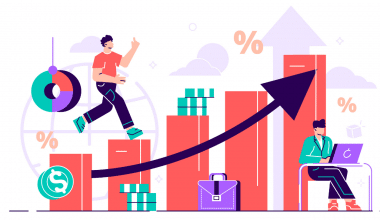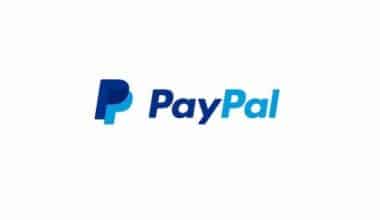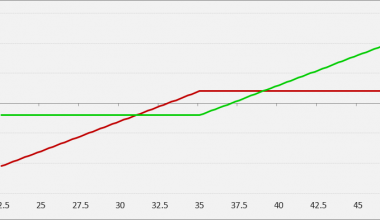Pinterest is a unique visual-oriented social media website with 454 million active members globally. It is a leading internet platform and one of the fastest-growing social networks, with a net worth of $28.13 billion. Pinterest, founded in 2010, has grown tremendously and has become a social media sensation by targeting various groups with different attention-grabbing material.
It’s also worth noting that Pinterest is a visual search engine and discovery platform with no direct competitors. Google, the closest competition, has an entirely distinct set of functions.
So, can you explain how Pinterest works? What kind of value does it provide to its customers? Why has no one ever come close to this colossus? And how does Pinterest generate money?
What Is the Business Model of Pinterest?
Pinterest considers itself to be both a photo-sharing software and a search engine. The company makes money by offering tailored digital advertisements.
While there are other photo-sharing social media sites, including well-known apps such as Instagram and Snapchat, Pinterest’s business model does not revolve around sharing photographs or videos with friends and followers.
On the other hand, Pinterest sees itself as a “discovery service” that assists users in creating a virtual vision board. They have a variety of pins to choose from, including regular image pins, product pins, collections, and video pins. Pinterest is commonly used for weddings, house remodeling, and weekly meal planning.
Advertising
Pinterest makes the majority of its money through selling adverts. It sells adverts using a cost-per-click and cost-per-thousand impressions approach. Still, it determines price according to engagement, which means that advertisers are only charged when a user interacts with a sponsored pin. Advertisers can also target adverts to users depending on their interests. A bridal gown company, for example, can target ads to people who are actively planning weddings, whereas a paint company can target users who are planning a refurbishment. This advertising appeals to businesses seeking a higher return on their advertising spending.
Who are Pinterests’ Competitors?
No companies with the same business model as Pinterest, while photo-sharing social media sites such as Instagram and Snapchat exist. Its main competitors are Houzz (HOUZ), a home remodeling platform, and Tastemade, an online food, and recipe portal.
Takeaway: Pinterest is used by over 335 million individuals each month, with women accounting for two-thirds of all users.
How Pinterest Makes Money
Advertising is the primary way Pinterest makes money. On their platform, they distinguish between two types of advertising: brand advertising and performance advertising.
#1. Brand Promotion
When an advertiser optimizes their campaign for things like impressions or views, they are using brand ads. These advertisements are ideal for businesses that want to raise brand awareness. They display in a pinner’s home feed and on search results sites, resemble organic pins, and can be saved to pinboards.
#2. Performance Marketing
The other way Pinterest makes money is through performance advertising. These are advertisements in which an advertiser optimizes a campaign based on engagement-focused objectives such as clicks or conversion events. These pins, like organic pins, appear in feeds and search results pages. They can be saved to a pinboard as well.
#3. Collaborations with Partners
Pinterest offers a carefully curated list of partners who can assist businesses with their advertising strategy, audience targeting, content, creative, performance measurement, and purchasing experience. The companies include;
- Shopify (SHOP)
- Bluxome.co
- Neustar
- Vidmob
- Smartly.io
Pinterest is most likely compensated for referrals from partners.
Pinterest also makes money from pins by providing a ‘Buy it’ option, which allows users to purchase pinned things straight from Pinterest through partner merchants and earn commissions on these sales.
#4. Collaborations with Influencers
Influencers can monetize their content on Pinterest by tagging shoppable products, adding affiliate links, and including brand relationships. They also provide paid content creation possibilities for influencers through Creator Rewards, allowing businesses to collaborate with Influencers on the network. Pinterest receives a cut of the money generated by these collaborations.
#5. Acquired Companies
Since its inception, Pinterest has purchased several businesses, some of which may continue to provide money for the firm. However, the majority of those companies are no longer in operation because their acquisitions were ‘acquihires,’ which implies Pinterest bought them primarily to acquire the company’s founding team so that they could work at Pinterest. Instapaper is still in operation, although Pinterest has recently purchased them.
Who is Pinterest’s Target Audience?
Pinterest primarily targets users and advertisers based on their usage intent.
Individuals who create original content, re-pin to make collections, or assemble pinboards to add to the content inventory for free are called users.
Conversely, advertisers are small and large businesses and brands that pay to showcase their products and services on the platform exclusively.
It is worth noting that Pinterest appeals to people of all ages. In comparison, Gen-Z and Millennials are the most visible target audiences, accounting for 36% of all users aged 18-29. The platform is also popular among Generation X and Baby Boomers.
According to Pew Research Center research, Pinterest is utilized reasonably across all socioeconomic categories, with minor variations. Different economic groupings use it in the following ways:
| Yearly Income | Percentage Users |
| <$30,000 | 30% |
| $30,000- $49,999 | 32% |
| $50,000- $74,999 | 31% |
| >$75,000 | 35% |
Regarding gender demographics, 45% of women actively use the site, compared to 17% of males. Geographically, the United States of America has the most Pinterest users, accounting for 89.9% of the audience, followed by Brazil, Mexico, Germany, the United Kingdom, and so on.
What Value Does Pinterest Offer Its Users?
Pinterest is like an interactive visual encyclopedia that may captivate us for hours. But why does this happen?
Because Pinterest combines two of the most interesting social networking aspects, namely visual material and sharing personality, it can address the users’ pain issues. It provides tremendous value to pinners by allowing them to:
1. Browse with ease:
Pinterest is a website that connects visitors to a million other websites and apps at the same time. It presents the most explicit and popular information linked to the search and provides a bird’s-eye view of the whole online terrain without the need to visit each site individually. Furthermore, the user-friendly interface makes interaction with the website/app. The feed presents material based on choices categorized by age and area, further personalizing the experience.
2. Visually explore:
Pinterest is similar to a visual scrapbook, hosting a wealth of ideas and themes from A to Z. When you search for the word ‘Holiday,’ for example, the search results display novels, movies, tour packages, blogs, gifting goods, themes, ideas, short video, photo shoots, and so on that are closely related to Holiday. Furthermore, rather than text-based material, customers may search and discover visually through photos, making the consumer experience more enjoyable and memorable.
3. Curate content:
There are two sorts of content creators on the platform. Users explore ideas on the site and create pins and pinboards by collecting and organizing comparable information. Because these pinboards are available to others on the network, they generate content for others. Small and large businesses and creative individuals curate original material, products, and services and surface them on the platform by creating pins of their own content to advertise themselves. These entities either pay for or do not pay for fresh content on the site.
4. Plan and organize:
Users can manage their pins across multiple boards based on themes or tasks. Furthermore, the user can construct unique pinboards by re-pinning similar pins and adding new themes to the platform. As a result, Pinterest serves as a road map for completing numerous professional and personal goals.
What Value Does Pinterest Offer Advertisers?
Pinterest-promoted pins or advertising generate significant money. Businesses and businesses can use visual images to capture their audiences better and display their offers. This, in turn, motivates people to take action and make purchases. Advertisers choose Pinterest because it allows them to:
- Targeted advertising campaigns: People who visit Pinterest have a specific goal. This implies consumers are drawn to the site to investigate, buy, discover new ideas, and so on, which is why they are more inclined to act after seeing adverts. As a result, advertisers are successfully reaching out to only those users on Pinterest who are likely to become their customers. This is why Pinterest ads are more rewarding than social network ads.
- Get a massive reach: When the information brought in by the business is contemporary, customer-targeted, and engaging, it is re-pinned on various dashboards and pinboards, highlighting the content even more on the platform. As a result, it drives an increasing number of individuals to the advertisers’ websites.
- Learn about the customer experience: Advertising on Pinterest is more than just selling a product or service. There’s more to it. Businesses can use the platform to communicate a visual story and build brand recognition. As a result, businesses obtain insight into the consumer experience from start to finish.
- Make a long-term impression: Pins have a more prominent presence on the network and last longer than tweets and Instagram posts. A pin may reappear on the home feed months after it was initially posted. Advertisers benefit significantly from this longevity.
What Are Pinterest’s Most Important Resources?
Pinterest can provide excellent value to its customers because it uses its valuable assets well. These assets are the company resources created and nurtured for the business to grow. Pinterest’s assets are divided into two categories:
#1. Digital Resources
Pinterest’s primary resource is its proprietary software platform, which hosts its website and application. The website is accessible via desktop or tablet, and the app is available for Android and iOS devices, making the visual discovery on Pinterest easier.
#2. Human Resources
Employees are the human resources at the heart of all Pinterest operations, managing technical, content, and other assets to deliver the value proposition. It employs over 2500 people from various backgrounds.
Pinterest’s top human capital is its technical employees, who support the company as it builds and improves its platform. They optimize its virtual presence and make its operations more efficient—for example, app developers, social media managers, etc.
Meanwhile, Pinterest has been collaborating with ISPs and expanding its zero-rating agreements. Zero-rating agreements allow internet service providers to make sure websites are available for free or at a reduced cost. In other words, Pinners can access the site/app without consuming any internet data.
Who Are Pinterest’s Most Important Partners?
Pinterest has developed strong relationships with people and businesses that help its operations run smoothly. Pinterest Partners is a program comprised of companies providing services and tools to help brands evolve and optimize their earned, paid, and owned content.
Among Pinterest’s key partners are:
#1. Advertising Partners:
These companies assist businesses in developing an effective media strategy. They assist brands on Pinterest in creating engaging ads and managing marketing campaigns. Pinterest’s advertising partners include Kenshoo, Smartly.io, and Sprinklr.
#2. Audience Partners:
They assist businesses in discovering customer experiences and utilizing the information to build a more targeted brand. Pinterest’s audience or shopping experience partners include MikMak, Shoppable, and SmartCommerce.
#3. Content Partners:
They assist businesses in optimizing their Pinterest content by utilizing tools such as Pin schedulers and engagement dashboards. It aids in establishing a strong presence on Pinterest. Pinterest’s content partners include Buffer, Newscred, and Tailwind.
#4. Creative Partners:
They assist businesses in scaling their success by injecting creativity into their content. They use specialized tools to create competing attention content. Pinterest’s creative partners include The Online Studio and Social Native, as well as Adobe Spark and Canva.
#5. Measurement Partners:
They assist businesses in analyzing and tracking data to create more precise targeting promotional content for the platform. To shape the brands, they use expert analytics and measurement tools.
#6. Shopping Partners:
They assist businesses in quickly establishing an online store and attracting customers. They aid in the management of the feed and the delivery of positive customer experiences. Pinterest’s shopping partners include Shopify, Ecwid, WooCommerce, and Feedonomics.
How Does Pinterest Reach Out To Its Users?
Pinterest reaches out to people through specific communication channels to establish a presence and provide services. These key channels provide easy access to the platform.
Pinterest makes the following channels to attract new customers to the platform for the first time:
- Website and mobile application: Users can gain direct access to the platform via a website or an app available for Android and iOS. The website and app interface are also accessible for beginners to learn. The well-organized website in mobile and desktop versions makes online browsing even more accessible.
- Pinterest can also be accessed through indirect channels such as search engines and social media platforms. Pinterest’s indirect channels include search engines like Google and social media platforms like Facebook. For example, Google uses Pinterest images in their image search results, and Pinterest allows pins to be shared on Facebook and other social platforms. Browsers are directed directly to the website in this manner. Other sources that help Pinterest reach its potential users include Twitter, Linkedin, and YouTube.
- Pinterest makes a monthly email newsletter, push notifications, business and resource pages, word-of-mouth publicity, established blogs, and other tactics to retain and engage its users over time.
What is the Pricing Structure of Pinterest?
Pinterest’s annual reports provide insight into the company’s extensive costs. The costs are classified as follows
- Cost of Revenue: Pinterest’s revenue includes all costs incurred to provide customer service and value. For instance, the cost of maintaining the website and app, employee salaries, payments to partners, transaction fees, and other overhead costs.
- Research and development expenses: This includes all costs associated with personnel and facilities associated with the service’s research and development, such as engineer salaries.
- Sales and marketing expenses: This includes all personnel and facility costs associated with sales, sales support, marketing, business development, and customer service functions. Marketing employee expenses, professional hiring fees, advertising and promotional expenses, and so on.
- General and administrative expenses: This includes all costs associated with personnel and allocated facilities for general functions, administration, legal, and financial purposes. For instance, salaries for accountants and managers, administrative overhead costs, etc.
Conclusion
While Pinterest has a distinct business model that allows businesses to advertise highly targeted manner, the company is still in the early stages of monetizing its platform and has yet to achieve profitability. Its revenue is almost entirely derived from advertising and revenue streams related to advertising.
- PINTEREST LOGO: The Founding Story and Evolution of Pinterest
- HOW DOES INSTAGRAM MAKE MONEY IN 2023
- General Partnership Definition: Taxes, Liability & Agreement
- CHANNEL MANAGEMENT: Meaning, Examples & Why It Is Important
- Social Media Marketing Tips: Top 29+ Tips for Small Businesses






